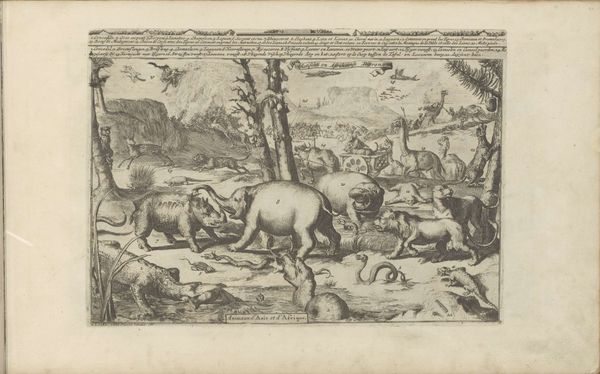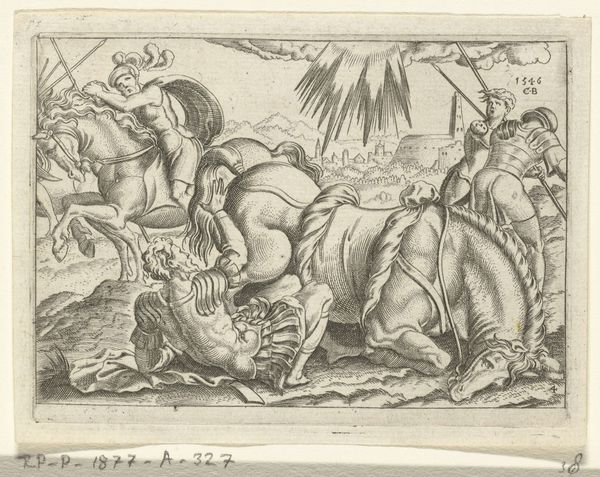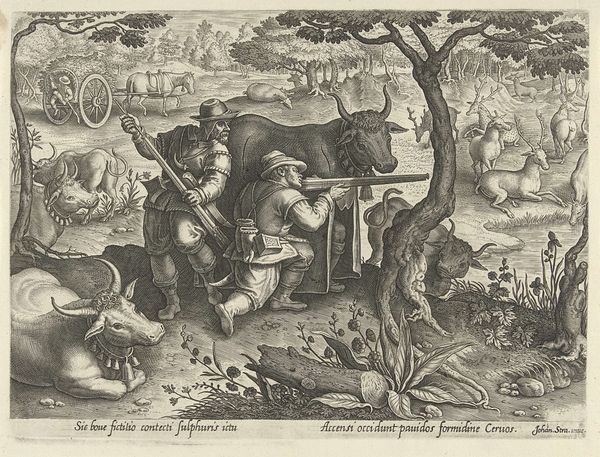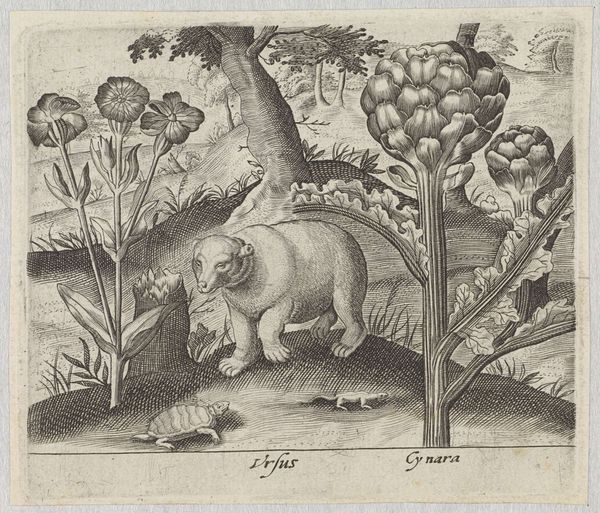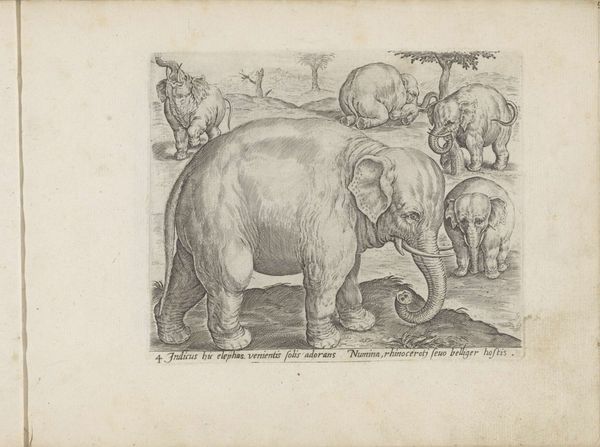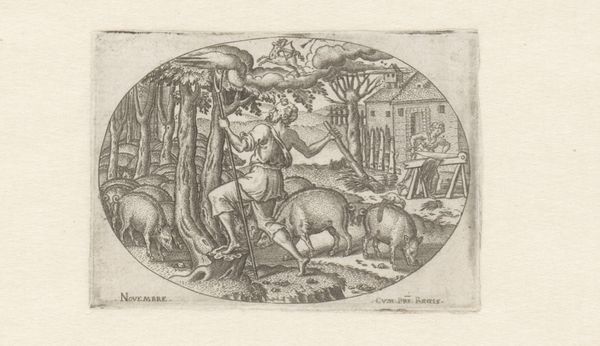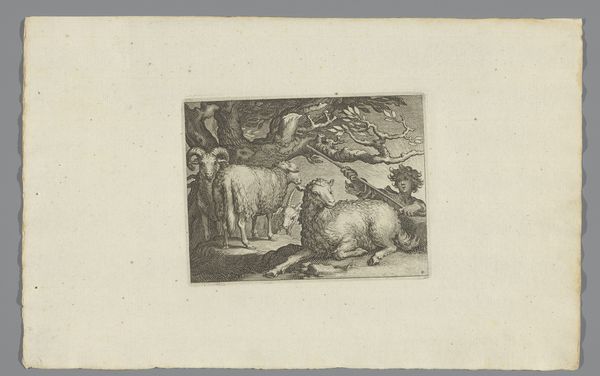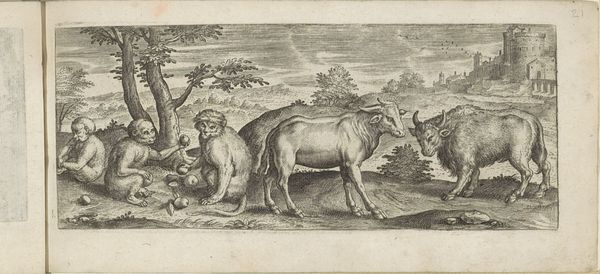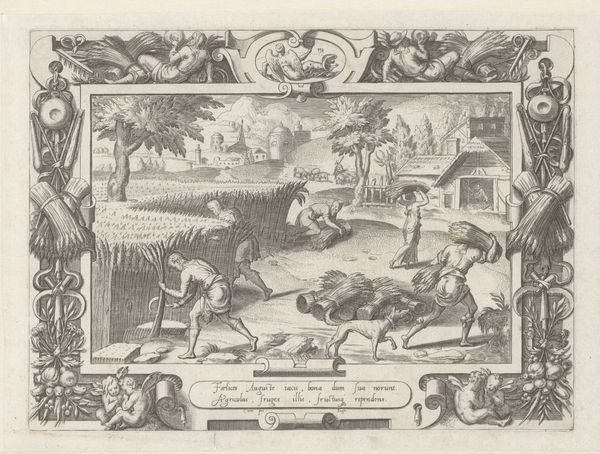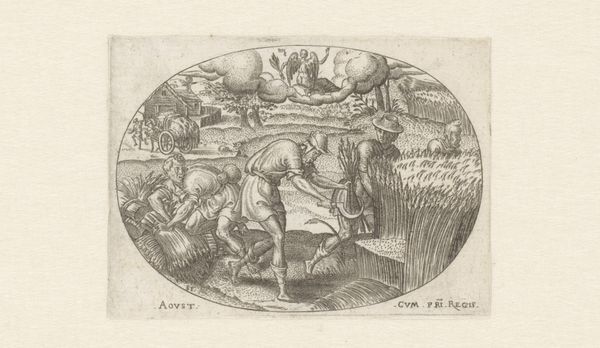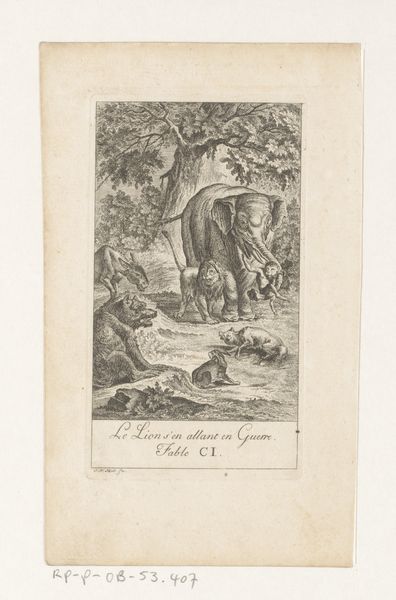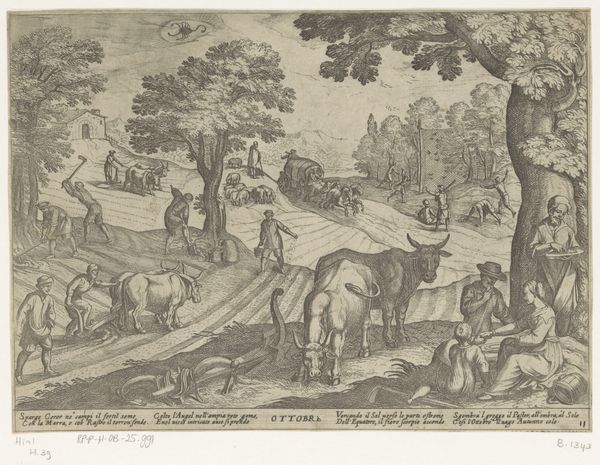
print, etching
#
animal
# print
#
etching
#
landscape
#
11_renaissance
#
northern-renaissance
Dimensions: height 121 mm, width 154 mm
Copyright: Rijks Museum: Open Domain
Curator: Here in the Rijksmuseum, we have an etching entitled “Neushoorn en drie olifanten,” dating roughly from 1581 to 1600, created by an anonymous artist. Editor: My first impression is just how striking the textures are! The artist really emphasized the physicality of these animals. There’s a dynamic interplay of intricate patterns and smooth surfaces, which really catches the eye. Curator: It’s fascinating how European artists of this period represented exotic animals they likely never saw. Prints like this were often based on second-hand accounts, shaping public perceptions of the wider world and, in a way, enacting a kind of symbolic appropriation through imagery. Editor: Exactly! Note how the stark lines and precise detailing give a almost scientific, albeit somewhat imaginative, quality. The cross-hatching emphasizes form and volume, which brings the figures into high relief. Even the landscape seems carefully constructed rather than naturally observed. Curator: That deliberate construction speaks volumes. This image reflects Europe’s burgeoning colonial ambitions. By showcasing these creatures, prints like these solidified European dominance over the natural world and the places they inhabited, framing the animals as specimens in the theater of expanding trade and empire. Editor: It’s like the artist is saying, “Here are these impressive creatures,” almost objectifying them through the controlled and meticulous use of line and form. It also plays with light and shadow to create a strong sense of depth and volume, enhancing that palpable, sculptural presence. Curator: Despite the formal artistry, there's a troubling history embedded in these early depictions. This print participates in a larger project of visual colonialism, illustrating Europe's growing power through the act of representation. Editor: That's an important point to consider. While I was initially drawn to the craftsmanship, your observations invite a deeper reflection on the social implications of such images. It highlights the inherent tension in appreciating historical art without ignoring the context of its creation and consumption. Curator: Precisely. Art from the Renaissance offers a window into both the era's aesthetic values and its underlying power dynamics, prompting critical engagement with the past. Editor: Indeed, a rich and layered artwork, rewarding extended viewing.
Comments
No comments
Be the first to comment and join the conversation on the ultimate creative platform.

